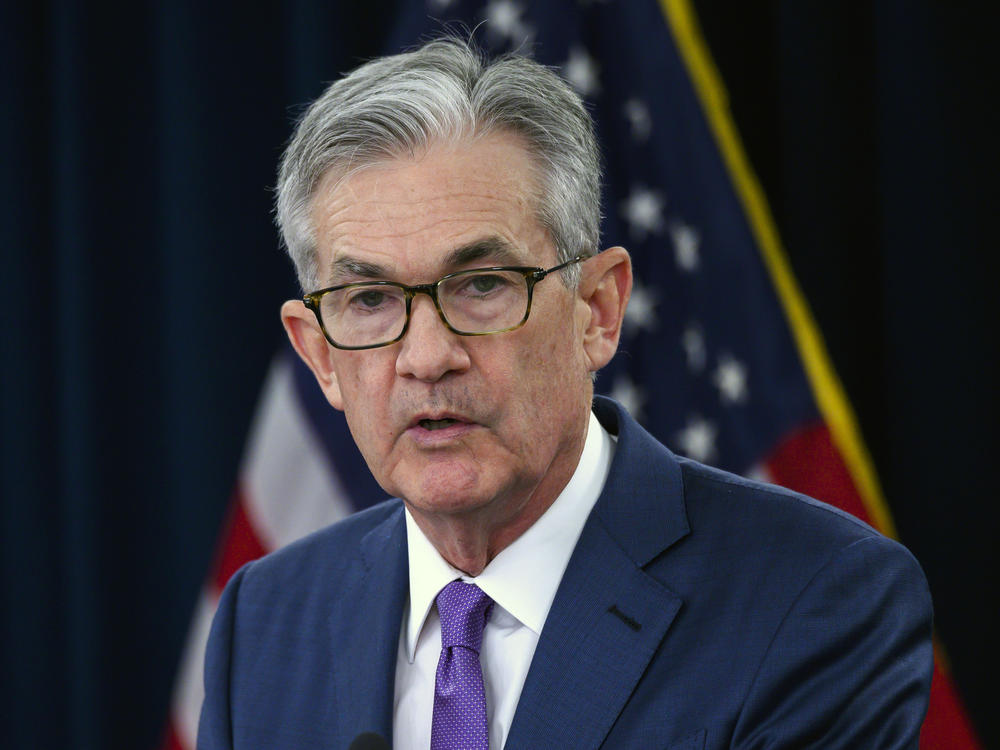Section Branding
Header Content
The Fed held interest rates steady — but the fight against inflation is not over yet
Primary Content
Updated November 1, 2023 at 6:16 PM ET
The Federal Reserve left interest rates unchanged Wednesday, but signaled that future rate hikes are still possible if that's what it takes to curb stubborn inflation.
This was the second meeting in a row in which policymakers held rates steady at 5.25% to 5.5%, following an aggressive series of increases over the previous year-and-a-half.
"In light of the uncertainties and risks and how far we have come, the [central bank's rate-setting] committee is proceeding carefully," said Fed Chair Jerome Powell.
Inflation has fallen significantly since hitting a four-decade high last summer, but prices are still climbing faster than the Fed's target of 2% per year.
Despite the sharp run-up in borrowing costs, consumers are still spending freely on cars, restaurant meals and Taylor Swift concert tickets. The nation's economy grew at an annual pace of 4.9% in July, August and September, with personal spending driving much of that increase. The Fed noted that "strong" pace of growth in announcing its decision.
"Clearly people are still spending," Powell told reporters. "The dynamic has been really strong job creation with now wages that are higher than inflation, and that raises real disposable income and that raises spending."
Ready to act
Eventually, that robust spending could reignite inflation, requiring additional rate hikes. For now, though, the Fed is content to play wait and see. That's partly because the effects of the earlier rate increases are still being felt. Policymakers said in a statement they would consider "the lags with which monetary policy affects economic activity and inflation" in deciding whether additional rate hikes are necessary.
The Fed is also monitoring the job market, which has shown remarkable resilience in the face of rising interest rates. Unemployment has been under 4% for 20 months in a row. That streak will likely be extended to 21 months when October's jobless rate is reported on Friday.
The tight job market continues to put upward pressure on wages. Employers' cost for wages and salaries rose 4.6% for the twelve months ending in September, the Labor Department reported Tuesday. While that's a smaller increase than the previous year, it's likely to keep prices climbing faster than the Fed's 2% target.
Borrowing costs have risen
In addition to the Fed's moves on short-term interest rates, long-term borrowing costs — which are set by the bond market — have also been going up. The average cost of a 30-year home mortgage, for example, is now 7.79% according to Freddie Mac -- the highest since 2000.
That's tamped down demand for houses and related items such as furniture and appliances, taking some pressure off the Fed.
"The rise in long-term rates has done some of the Fed's dirty work for them," said Greg McBride, chief financial analyst at Bankrate. "They can afford to sit back and not raise short-term interest rates at this point because the move up in long-term rates has been so pronounced, and it has the effect of reducing demand in the economy."
The Fed has already raised short-term interest rates eleven times since March of last year, pushing its benchmark rate from near zero to the highest in over 20 years.
Policymakers signaled in September that, on average, they expect one more quarter-point rate increase by the end of the year. The next rate-setting meeting is scheduled for mid-December.
Copyright 2023 NPR. To see more, visit https://www.npr.org.

